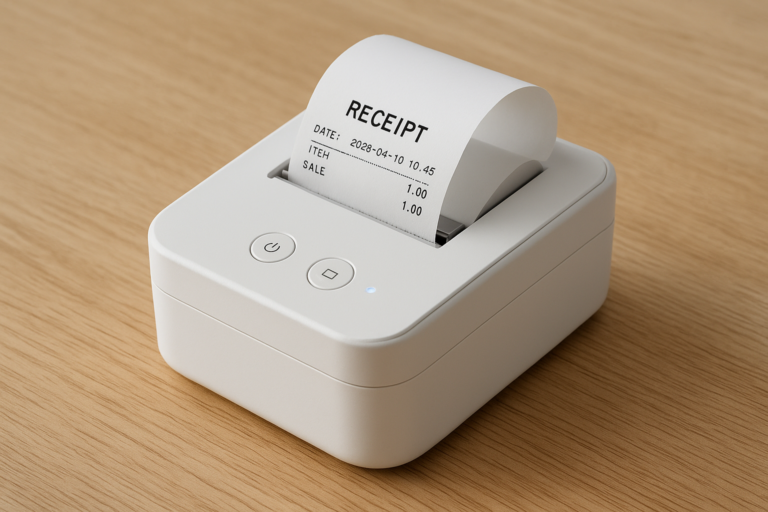Role of Thermal Paper
Retail business is very competitive, and this means that even the slightest thing that can be overlooked in other companies or industries could be the undoing of a retail business. That said, one component that is frequently neglected despite its importance in this equilibrium is thermal paper. Being involved directly with the receipt, label, and ticket printing role of Thermal paper rolls is a crucial and necessary component in any service-oriented business.
What is Thermal Paper?
Thermal paper Roll is an ordinary type of paper that has a heat-sensitive coating. It is a heat-sensitive material whose coating changes color when exposed to heat, forming an image or text. Impact printers are divided into dot-matrix and thermal; thermal printers are widely used in supermarkets, shops, and stores for receipts and labels.
Benefits of Using Thermal Paper Rolls
Speed and Efficiency
Nevertheless, it is essential to move fast when it comes to retail services. Consumers want their products as soon as possible, and any kind of delay causes dissatisfaction among the target market. The thermal printer roll takes very little time to print, as is the case with most grocery stores’ checkout time.
Cost-Effectiveness
Despite the fact that thermal printers cost more to purchase than traditional printers, they have considerable advantages as a long-term investment. First of all, thermal printing does not use ink or toner, which means that it is cheap in the long run because one has to buy the ink and toner from time to time. Moreover, thermal paper rolls are usually purchased in large quantities, and the price of thermal paper rolls per unit is relatively low for retailers.
Quality and Durability
Thermal paper also provides the improved quality of prints that are easily visible and crisp, which is a big plus for receipts, and labels must be durable. While some signs using inkjet or laser are bound to fade away one day or the other, thermal printer rolls are more permanent and will remain visible for use.

Eco-Friendly Options
Also, with the increasing consciousness regarding the use of natural products, many of the retailers are looking for eco-friendly products only. Thankfully, the manufacture of thermal paper is possible with recycled materials and free from toxic chemicals. The thermal paper industry provides various solutions for retailers who wish to move a step forward in terms of sustainability.
Minimal Maintenance
Compared to conventional printers, thermal printers are relatively low maintenance. There are no ink cartridges to replace, and also there may not be many problems that may occur, such as jams and other mechanical issues. This reduces the amount of time equipment spends off or being fixed; workers can, therefore, spend time serving the clients rather than fixing equipment.
Factors to Look at When Selecting Thermal Paper Rolls
Although there are many seemingly apparent benefits of using thermal paper rolls in your retail operation. There are four critical considerations to make when choosing between them.
Size and Compatibility
Thermal paper rolls are many and are available in different sizes and widths according to the printer type. The stakeholders, which are the retailers, should make sure. That the thermal paper they buy is compatible with the equipment they are using. If misused, they will be counterproductive and may result in wastage of many resources.
Quality of the Paper
The quality of the thermal paper is not necessarily the same. Thermal paper of high quality is more costly than low quality. But it can help produce quality prints that are also more durable. There is a need for retailers to source this paper. From quality to ensure that they get the right kind of paper consistently.
Environmental Impact
Earlier, it was noted that thermal paper is another primary environmental concern. Retailers should consider papers that standard organizations approve with an ecological classification. This not only goes a long way in cutting costs on the use of carbon but also caters to green, climate-conscious clients.
Storage Conditions
We were also informed that thermal paper was heat-sensitive, light-sensitive, and moisture-sensitive. This is because thermal rolls can only be stored in cool, dark areas. After all, moisture can harm it. Print headlines, however, can be used to enhance the life of the paper by keeping it at optimum storage conditions.
Cost vs. Quality
There will always be instances where the cheapest thermal paper is easily bought. But this must be done in proportion to the quality of the thermal paper. The use of low-quality paper leads to issues such as jamming of the printer’s low-quality prints, which are all unpalatable to a customer.

Conclusion
Retail operations are major chain activities that are, in most cases, central to the performance of the retail business since they have direct impacts on how the customers are handled as they frequent the company and other aspects that determine the efficiency of the company. However, thermal paper rolls are an indispensable part of these processes. In terms of their performance, the paper rolls, their speed, cost, and quality. And low maintenance requirements are essential gear for contemporary retail outlets.









